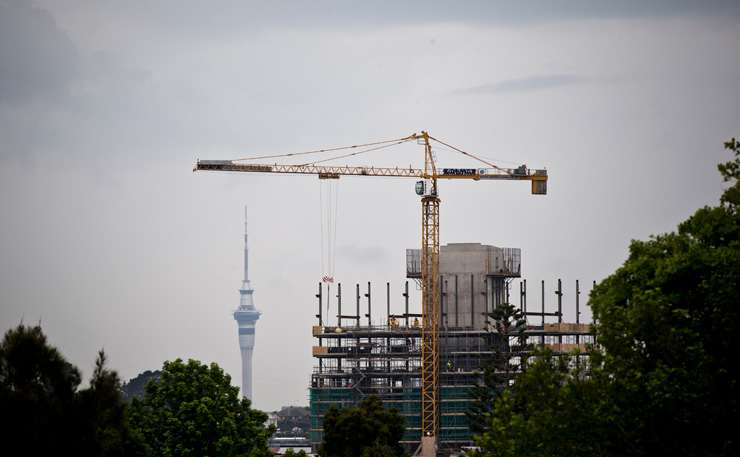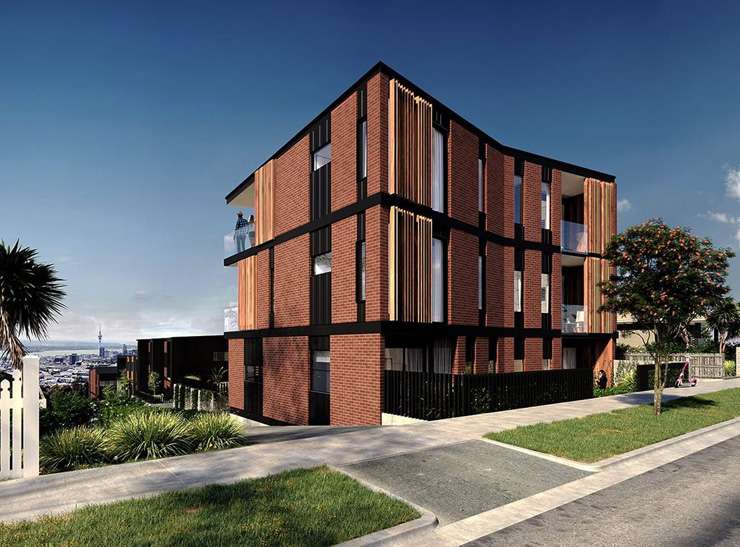The surge in residential crane work to an all-time peak in the six months to the end of August, with a record 59 cranes working on Auckland housing and apartment sites alone, highlights the new-build opportunities for Kiwis looking to enter the housing market in the next couple of years.
First-home buyers and investors, as well as the country’s growing downsizer market, will benefit from the influx of new apartments and terrace homes. But which property type has the edge?
The main differences between the two is that apartments tend to be laid out on a single-level and townhouses and terrace homes can be spread over two or three floors, says Barfoot & Thompson’s projects manager Matt Baird.
Baird knows which he’d prefer to live in, despite selling both. “An apartment all day long, personally. Apartment layouts are much more user friendly,” he says.
Start your property search
“If you take the stairs and the corridors out of the townhouse, there is probably 20% of the property [that] has disappeared into non-usable space. With no stairwells in an apartment there's much more usable space. “
Apartment buildings have lifts and wider corridors, and sometimes feel like a five-star hotel, he says.
Then there are the views. Views appeal especially to the downsizer end of the market. “If you’re going to downsize from a 300sqm house to 120sqm you want an upside,” says Baird. “And typically it's a view,” he says.
When the same development offers both townhouses and apartments, the latter sell better, says Baird. An example was the North Apartments in Grey Lynn. “The townhouses were always the last to sell. The buyers coming through wanted single level and they wanted a view. You don’t get that from a townhouse.”

Residential crane numbers are up in Auckland. Photo / Greg Bowker
But everyone has different requirements in their new homes. Pet owners may be drawn to townhouses over apartments thanks to access to ground level outdoor space, says Baird. “People with a little pooch or a cat like the fact they have a courtyard.” On the other hand, good apartments are built with decent sized balconies for people who simply want outdoor living, with the least maintenance possible.
Ray White, Parnell agent John Q has sold every style of home in Auckland’s Stonefields. The drawcard for apartments is they are lock up and leave. Townhouses in Stonefields tend to be bigger than apartments, but buyers can expect to pay $500,000 more. The starting price for an apartment in the modern suburb is around $1 million and for a townhouse $1.5m.
Q says walk-up apartments without lifts have been popular in the suburb. “There is no lift, which reduces the cost of the body corporate.”
Although apartments and townhouses are often lumped into the same bucket, they’re quite different beasts structurally, says Bill McKay architect and Auckland University lecturer.
To start with, townhouses are wooden framed buildings using traditional construction methods, which isn’t necessarily the way to go, says McKay. “It’s pushing it to use wooden frames for three stories, and so everything starts to creak and strain a little bit,” he says. “Corners may be cut on ceiling height [in a townhouse] whereas with apartment buildings you've made the shift to concrete construction. An apartment is more of a commercial build.”
Good apartment buildings such as those built by Ockham are more like American condos, he says. That means designed with good communal spaces. They may also have shared amenities that can be a drawcard such as swimming pools, and gyms. High-end apartments may have shared lounges, wine cellars, concierge services and more.
Body corporates
For some buyers, having a body corporate and the associated annual levies can be off-putting. But they’re not always a bad thing, says Baird. The levies pay for the building upkeep, amenities and insurance that owners would most likely be paying for anyway.
“Good apartments have a long-term maintenance fund. “[The body corporate] is looking after the value of your asset,” says Baird. “You’ll usually have a small residents’ society with a townhouse,” he adds.
One of the big issues for both apartment and townhouse buyers is where their beloved cars will go. Car parks cost money, says Baird. Even for entry-level purchases, expect to pay $100,000 more if you want a single garage with a townhouse or car park in an apartment building.

No car parks: An artist’s impression of the Urbizen apartments at 25 View Road, in Mount Eden, Auckland. Photo / Supplied
Baird has noticed that the lack of a car park is less of a problem nearer to major transport hubs. He cites the Urbizen apartments at 25 View Road, in Auckland’s Mount Eden, which have no car parks at all. “That was 21 really nice apartments designed for first-time buyers. No car parks, but a shared EV car on site, charging for electric scooters, and five minutes to the new Mount Eden train station. They sold really, really well,” he says.
“Buyers at that level, rather than spending $100,000, are quite comfortable not to spend the money and look for alternative forms of transport.”
Transport hubs make a huge difference whether it’s an apartment or townhouse. Many people raised an eyebrow when property developers proposed the Westlight Apartments at 6-8 Waikumete Road, in Glen Eden, says Baird. Yet they’re a one-minute walk from the train station, and sold well.
Typically, however, apartments tend to be an inner suburb phenomenon, and there are more low-rise townhouses in the suburbs.
There is a trade-off between buying an apartment on the city fringe, or a similarly priced townhouse, says Baird. “What we've found is that first-time buyers are either looking at apartments in the city or city fridge. For the same price in a townhouse they are out in the ‘burbs 20km or 30km away from town.”













































































